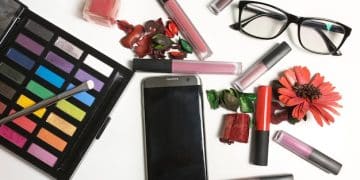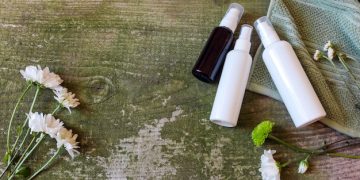Is Your Makeup Expired? Updated Guidelines on How to Tell and When to Toss It
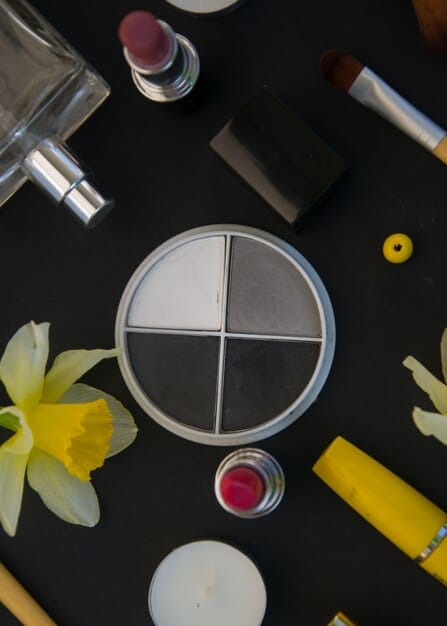
Determining if your makeup has expired is crucial for preventing skin irritation and infections; this guide provides updated guidelines on how to identify expired products and when it’s time to toss them, ensuring safe and effective beauty practices.
Is Your Makeup Expired? How to Tell and When to Toss It (Updated Guidelines) is a question every makeup enthusiast should ask regularly. Using expired makeup can lead to skin irritations, breakouts, and even infections. Let’s dive into how to keep your makeup bag fresh and safe.
Why Does Makeup Expire?
Makeup products, like food, have a shelf life. Over time, ingredients can degrade, bacteria can grow, and the product’s effectiveness can diminish. Understanding why makeup expires is the first step in maintaining a healthy beauty routine.
Ingredient Degradation
The chemical compounds in makeup break down over time due to exposure to air, light, and temperature fluctuations. This degradation can alter the product’s texture, color, and scent, making it less effective and potentially harmful.
Bacterial Contamination
Makeup products, especially those used around the eyes, are prone to bacterial contamination. Each time you use a product, you introduce bacteria from your skin, hands, or applicators. These bacteria can multiply and lead to infections.
Loss of Efficacy
Active ingredients in makeup, such as SPF in foundations or anti-aging components in creams, lose their effectiveness over time. This means the product may not provide the protection or benefits it claims to offer.
Expired makeup can cause more than just a bad makeup day. From skin irritation to more severe infections, the risks are real. That’s why it’s essential to know when to say goodbye.
- Check for changes in texture.
- Be aware of any unusual odors.
- Monitor for separation of ingredients.
Knowing the potential consequences can help you stay vigilant about your makeup’s expiration dates and conditions. Regular checks can prevent unnecessary skin issues and maintain your overall health.
General Makeup Expiration Guidelines
While specific expiration dates vary by product, there are general guidelines to follow. These guidelines help you determine when it’s time to toss your makeup, even if it looks and smells fine.
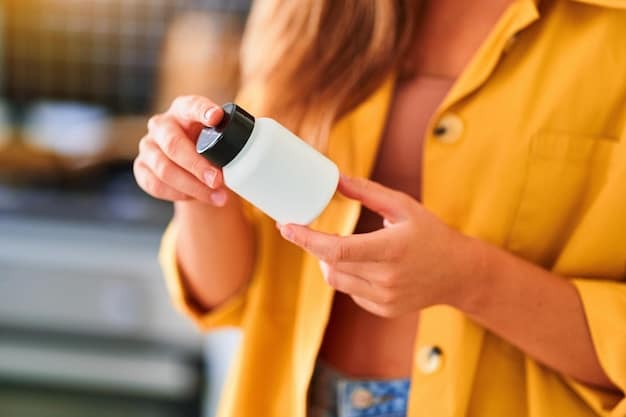
Mascara: 3 Months
Mascara is one of the most frequently contaminated makeup products due to its moist environment, which is ideal for bacterial growth. Replace your mascara every three months to prevent eye infections.
Liquid Eyeliner: 3-6 Months
Like mascara, liquid eyeliner is used close to the eyes and can easily become contaminated. Discard it after three to six months to avoid irritation and infections.
Foundation: 6 Months to 1 Year
The expiration of foundation depends on its type. Liquid foundations typically last six months to a year, while powder foundations can last up to two years.
These expiration guidelines are not just suggestions but essential rules to protect your skin and overall health. Sticking to these timelines ensures that you’re using safe and effective products.
- Adhere to the PAO (Period After Opening) symbol on packaging.
- Store makeup in a cool, dry place.
- Avoid sharing makeup with others.
By following these guidelines and practicing good makeup hygiene, you can minimize the risk of using expired products and keep your skin healthy and radiant.
How to Check Expiration Dates
Many makeup products have expiration dates printed on the packaging. Learning how to find and interpret these dates is crucial for knowing when to replace your makeup.
PAO (Period After Opening) Symbol
The PAO symbol is a small icon that looks like an open jar with a number followed by the letter “M” (for months). This symbol indicates how long the product is safe to use after opening.
Batch Codes
Some products don’t have a PAO symbol but use batch codes instead. You can use online tools to decipher these codes and determine the manufacturing date and estimated expiration date.
Manufacturer Websites
If you’re unsure about the expiration date, check the manufacturer’s website. Many brands provide detailed information about their products’ shelf life and how to interpret batch codes.
Checking expiration dates might seem tedious, but it’s a simple step that can save you from potential skin issues. Make it a habit to regularly inspect your makeup collection.
- Use a permanent marker to write the opening date on the product.
- Create a digital inventory to track when you opened each item.
- Set reminders on your phone to check expiration dates regularly.
These tips can help you stay organized and ensure that you’re always using fresh, safe makeup. A little effort goes a long way in maintaining your skin’s health.
Signs Your Makeup Has Expired
Even if you can’t find an expiration date, there are signs that can indicate your makeup has gone bad. Recognizing these signs is crucial for avoiding potential skin problems.
Changes in Texture
If your foundation has become clumpy or your lipstick feels dry and hard, it’s likely expired. These changes in texture indicate that the product’s ingredients have degraded.
Unusual Odors
A sour, musty, or otherwise unpleasant smell is a clear sign that your makeup has expired. This is often due to bacterial growth within the product.
Separation of Ingredients
If you notice that the oils and pigments in your foundation or concealer have separated, it’s time to toss it. This separation indicates that the product is no longer stable.
Trust your senses when it comes to expired makeup. If something looks, smells, or feels off, it’s better to be safe than sorry.
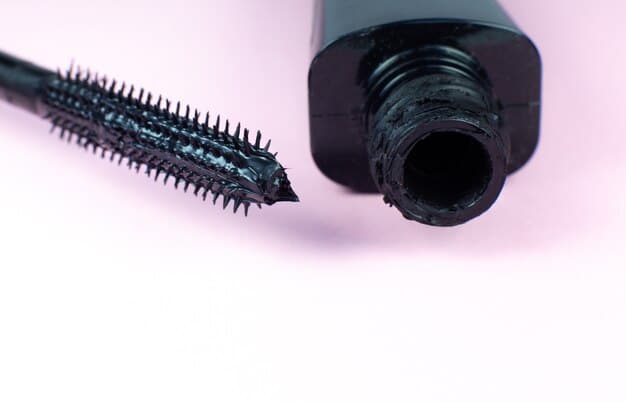
- Look for changes in color or pigmentation.
- Check for mold or mildew growth.
- Monitor for any separation of ingredients.
Being proactive about checking for these signs can help you prevent skin irritation and infections. Regular inspection ensures that you’re always using safe and effective products.
Proper Makeup Storage to Extend Shelf Life
How you store your makeup can significantly impact its shelf life. Proper storage can prevent premature degradation and bacterial contamination, keeping your products fresh for longer.
Keep Makeup in a Cool, Dry Place
Heat and humidity can accelerate the degradation of makeup ingredients. Store your products in a cool, dry place away from direct sunlight.
Avoid Storing Makeup in the Bathroom
Bathrooms are often humid, which can promote bacterial growth. Store your makeup in a bedroom or dressing room instead.
Close Lids Tightly
Exposure to air can dry out makeup and promote bacterial contamination. Always close lids tightly after each use.
Good storage habits aren’t just about organization; they’re about protecting your investment and your skin. Proper storage can extend the life of your makeup and keep it safe to use.
- Use airtight containers for loose powders.
- Store makeup brushes separately.
- Clean your makeup bag regularly.
These storage tips can help you maintain a clean and organized makeup collection while ensuring that your products stay fresh and effective.
Safe Disposal of Expired Makeup
Disposing of expired makeup properly is essential for protecting the environment and preventing misuse of discarded products. Understanding how to safely dispose of different types of makeup is crucial.
Check Local Regulations
Some municipalities have specific regulations for disposing of cosmetic products. Check with your local waste management authority for guidelines.
Recycle Packaging
Many makeup containers are recyclable. Check the packaging for recycling symbols and dispose of them accordingly.
Empty and Clean Containers
Before recycling, empty and clean the containers to remove any remaining product. This ensures that the recycling process is more efficient.
Responsible disposal is part of being a conscientious consumer. By following these guidelines, you can minimize your environmental impact and ensure that your expired makeup doesn’t end up causing harm.
- Donate gently used makeup to shelters or charities.
- Repurpose containers for storage.
- Use expired products for crafts or DIY projects.
By considering these alternatives, you can find creative ways to extend the life of your makeup products and reduce waste.
| Key Point | Brief Description |
|---|---|
| 📅 Expiration Dates | Check PAO symbol & batch codes for shelf life. |
| 👃 Signs of Expiration | Texture changes, unusual odors, ingredient separation. |
| 🌡️ Proper Storage | Keep makeup in cool, dry places, avoid humidity. |
| 🗑️ Safe Disposal | Recycle packaging & follow local regulations. |
FAQ
▼
Makeup brushes should be cleaned at least once a week, and more frequently if you use them daily. Dirty brushes can harbor bacteria and cause skin problems. Use a gentle cleanser and warm water to clean them thoroughly.
▼
No, it’s not recommended to use expired makeup, even if it looks and smells fine. The ingredients may have degraded over time, making the product less effective and potentially harmful to your skin. Always prioritize safety.
▼
Mascara should be replaced every three months. If your mascara is dry, clumpy, or emits a strange odor, it has likely expired. Using expired mascara can lead to eye infections, so it’s best to discard it.
▼
The PAO (Period After Opening) symbol looks like an open jar with a number followed by the letter “M.” It indicates how long the product is safe to use after opening. For example, “6M” means the product should be used within six months of opening.
▼
Sharing makeup is not recommended, as it can spread bacteria and infections. Each person has their own unique skin microbiome, and sharing products can introduce harmful bacteria. Avoid sharing eye products, lipsticks, and applicators.
Conclusion
Keeping track of your makeup’s expiration dates is a simple yet crucial step in maintaining healthy skin. By following these guidelines, you can avoid potential skin irritations, infections, and other issues. Always prioritize safety when it comes to your beauty routine.
